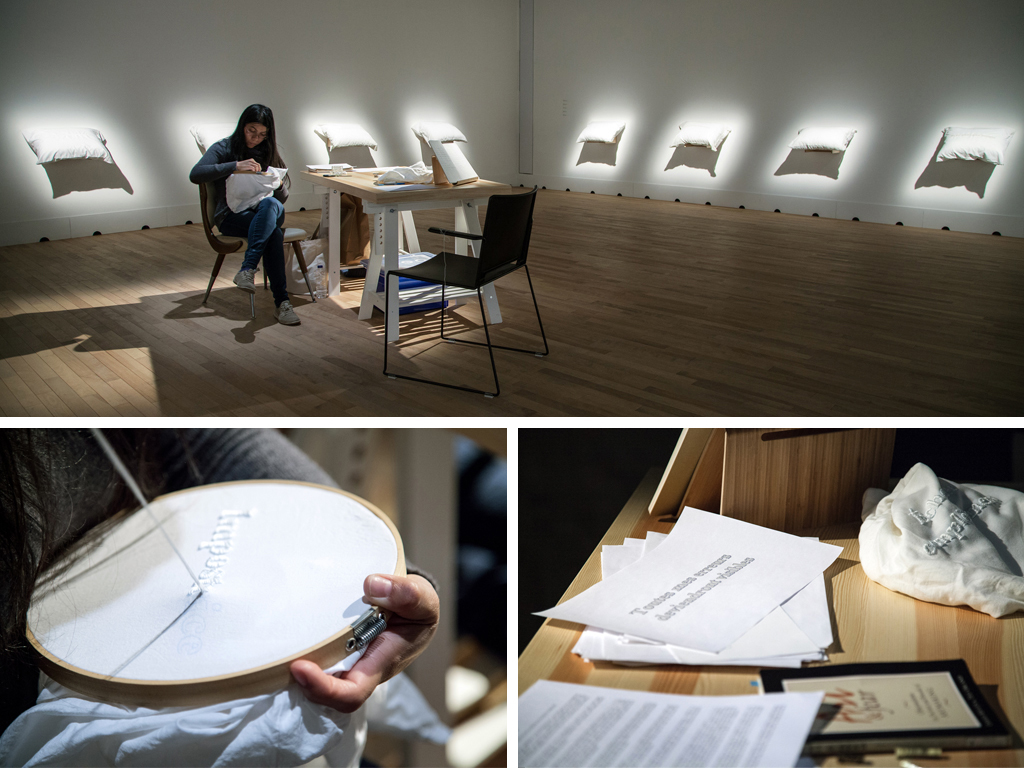Mexican-born artist living in the Eastern Townships since 2011, Estela López Solís is interested in the intimate life of beings, places and things and the emotional realities they hide.
In a sensitive relational approach that only active listening and the slowing down of production time allow, Estela López Solís lends her voice to those of others and dedicates herself to relaying their wounds, which have arisen as a result of personal or historical traumas.
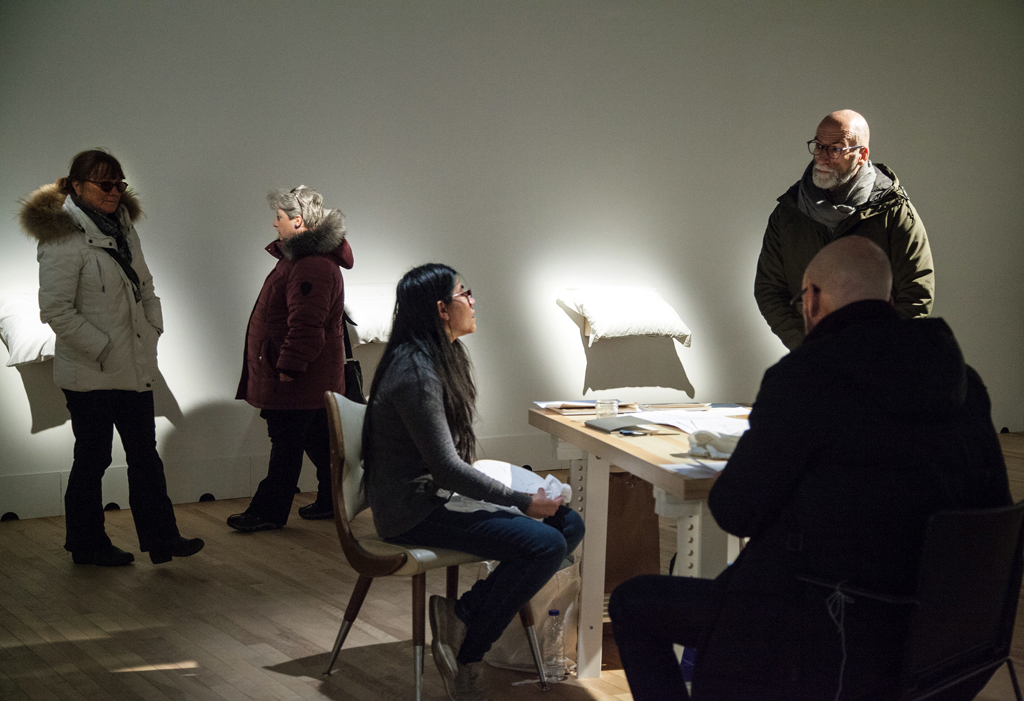
LISTENING
For several years, she has been collecting the sentences that various people entrust to her to create textile works that materialize the words in the exhibition space. Not focused on the object, her approach relies rather on a process where the traces of exchanges with the public are embodied in the embroidery. Her works develop according to a slow production rhythm that coincides the space of the studio with that of the gallery, as well as the time of creation and diffusion of the works.
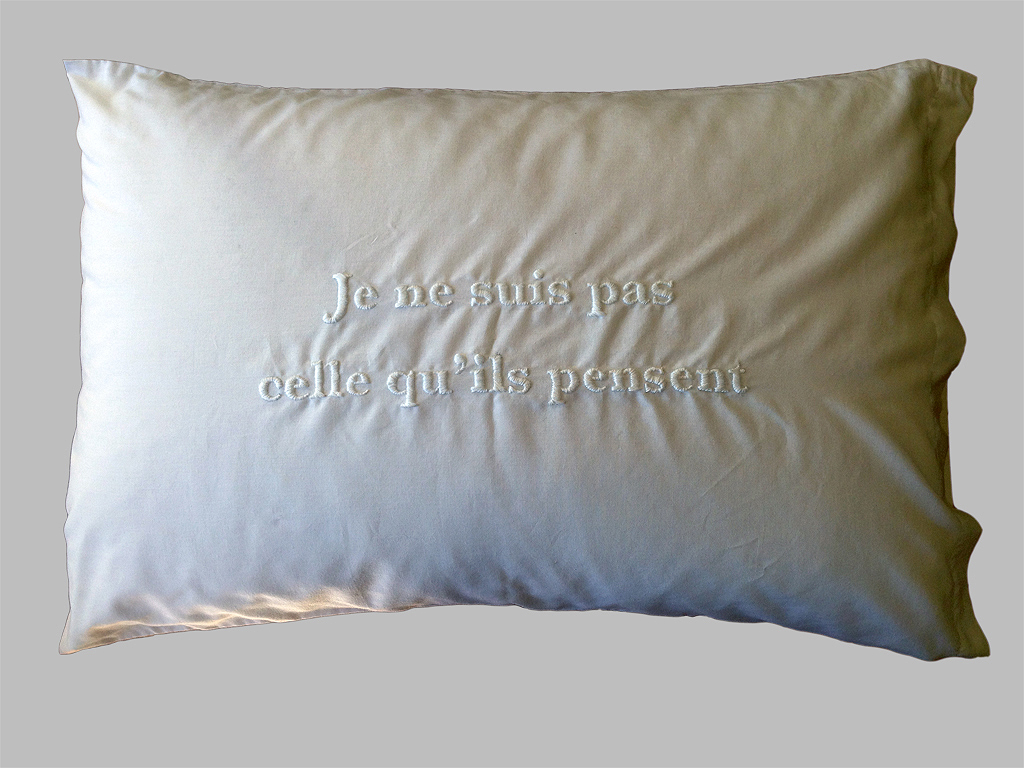
In the exhibition Susurrantes (2017) presented at the Centre culturel de Notre-Dame-de-Grâce, the artist examines the pains or anxieties that permeate our relationships with others. On the gallery walls, she presents a series of used pillowcases containing dark thoughts and negative feelings about injuries or anxieties. Figures of predilection of the appeasement, the pillows reveal here rather the torments disturbing our quietude. The installation is marked by calm, and provokes in the duration a sensitivity to the irruption of our intimate thoughts and encourages their reminiscences. It allows a certain empathy to settle in the sharing of personal experiences.
Making the gallery her studio, the artist also carries out a series of performances where she devotes herself to a patient needlework, in an attitude of waiting and listening favorable to confidences. These performances, which she calls Hantises, create moments that are conducive to welcoming negative emotions, such as fear or self-judgment, and provoke personal exchanges that constitute the heart of the artist’s purpose. For me, I felt a great deal of relief when I confided my dark thoughts to her, leaving them to the back and forth motion of the needle in her hands.
DISRUPT
Added to the way Estela López Solís uses slowness to share the sensitive issues of our psyche, is a consideration of time in the form of syncope. At the Brompton House of Arts and Culture in 2018, the installation of textile works Silences subtly divides the space, bringing it down to a domestic scale. In this context, the artist performs short performances at the opening, breaking from this mundane ritual to bring up something more intimate, around judgments about her biography or negative thoughts and fears previously expressed to her by visitors. The disruptive ritual that these services impose is in contradiction with the automatisms of daily life that govern our activities, condition our inattention and establish a form of alienation of our intimate life, motivated by social prescriptions.
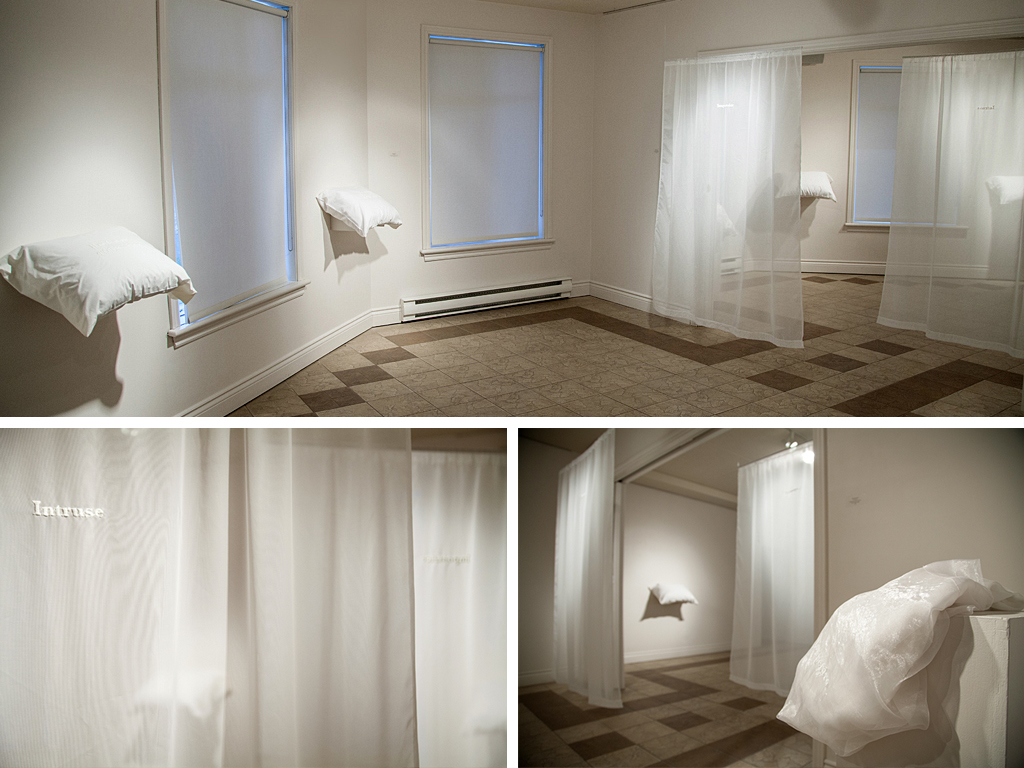
As Laurent Vidal underlines it in a recent work, the increasing mechanization bound to the industrial revolution imposes little by little a pace of work molding the body and the spirit of each one to the economic rate. The art world does not escape these imperatives. By the singular rhythm of waiting and listening that she establishes or by the counterpoints that she introduces in regulated rituals, López Solís reveals the wounds that these productivity objectives impose. However, she reverses the dynamic by relying on a patient emotional work, often invisibilized and devalued. Indeed, modernity associates speed and efficiency and interprets slowness as an incapacity, or even a discriminating factor in an imaginary of exclusion and domination. However, this relational investment requires a lot of time and, far from being passive or unproductive, it intimately links us to each other more than any other form of activity. In fact, López Solís’s works bring to the forefront what is slowly being woven and give substance to these intimate ties.
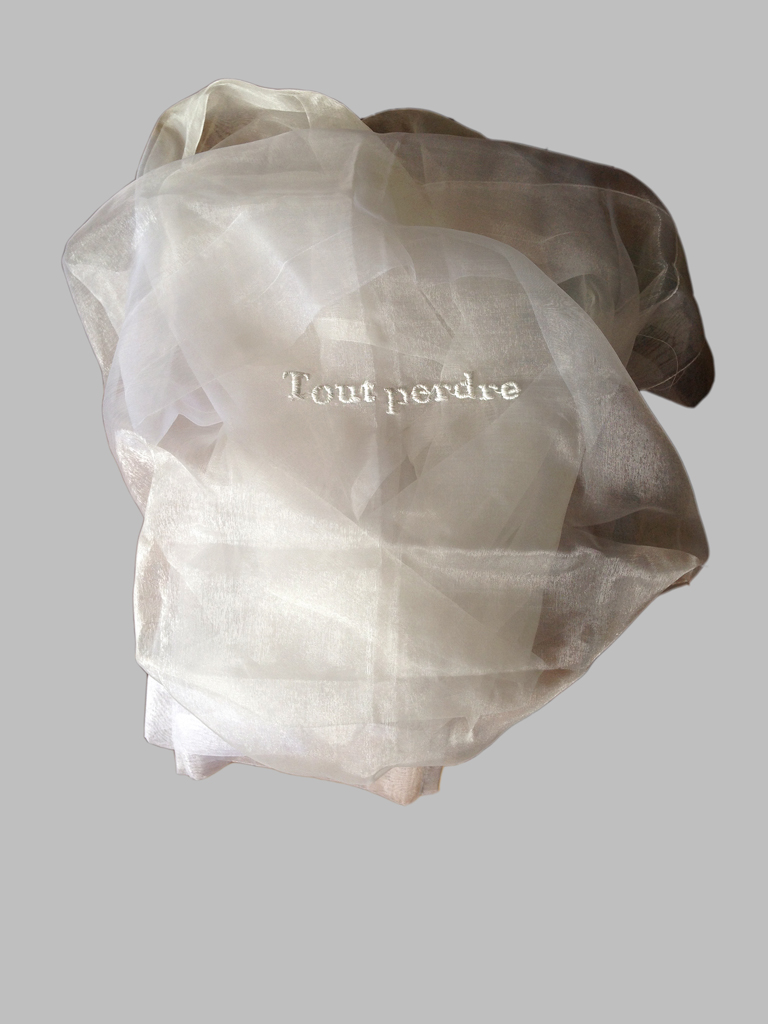
REMEMBERING
Her interest in the human psyche is also focused on the persistence, in the long time of history, of collective wounds and traumas, linked in particular to the colonization of America.
As part of the program Habana ~ Montreal: Encuentros de Arte Contemporáneo / Rencontres en art actuel organized in collaboration with the artist-run center DARE-DARE, in addition to a textile installation at the Artista X Artista center in Havana, she presents the performance ¿Cómo te voy a olvidar? / Sanar el pasado (How could I forget you? / Heal the past) (2019). This performance revolves around the classist and racist slur, “Cursed music of savages,” uttered in Mexican jargon against cumbia.
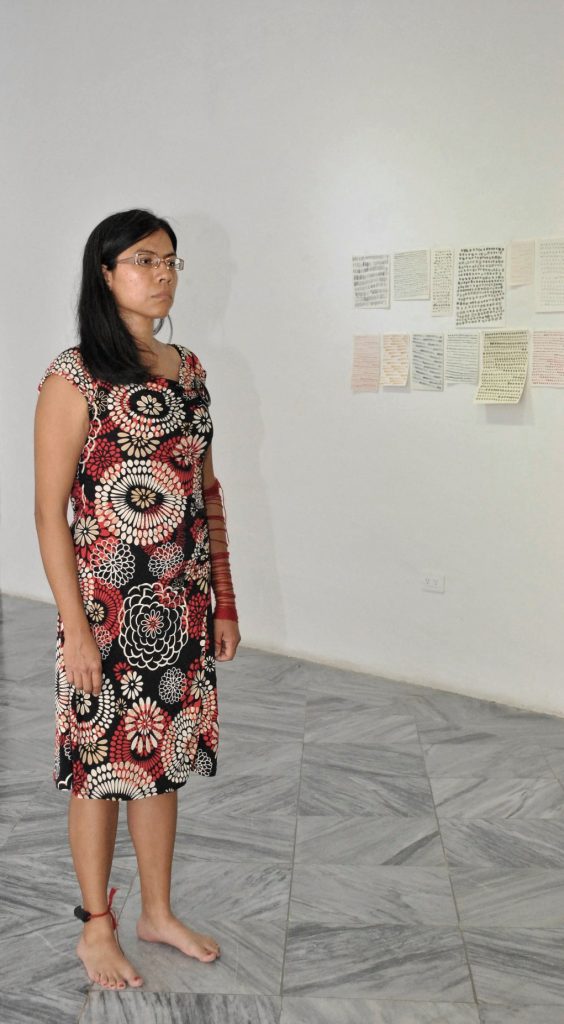
Originally from Colombia, but inherited from the songs of slaves from West Africa, this dance has gradually spread in South America and remains popular in popular parties today. Like other styles of music based on syncopation, the cumbia bears witness to a non-linear experience of time, rather cyclical, opposed to the notion of progress so dear to Western civilization and often justifying the domination of other cultures, or the power relationships within it. This musical form expresses autonomy and independence in front of a dominant culture, a posture that Estela López Solís makes her own. Through this cultural reference, also linked to personal memories of youth, she carries the voice of those who preceded and still accompany her, replaying the contempt of which they are victims and activating the subtle traces of traumatic histories still prevalent today.
From her personal intimacy, through the relay of the words of others or through cultural references, Estela López Solís patiently builds a “we” around the shared feelings of lack, fault and inadequacy, thus reversing their exclusive logic.
(Translated by Linguee, https://www.deepl.com/translator)

